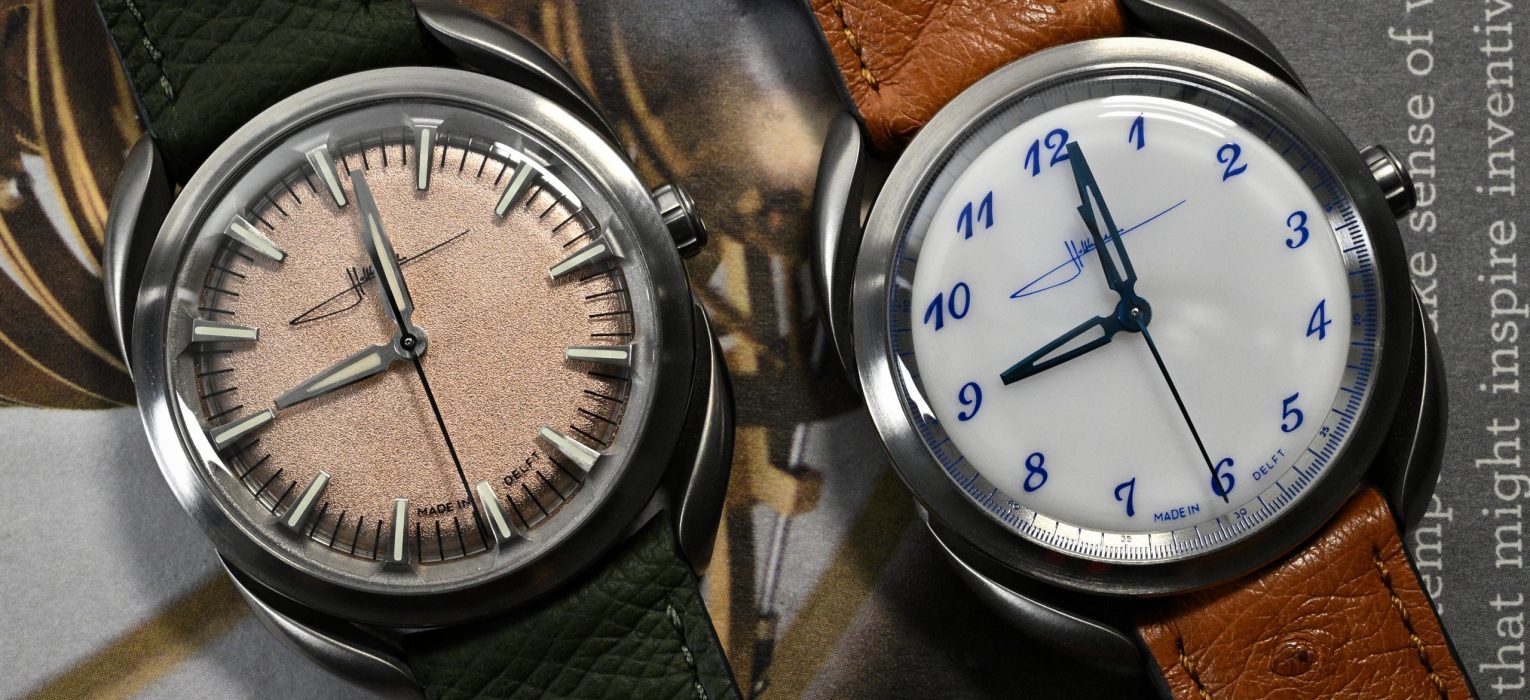Disclaimer: this video/review was not sponsored by Holthinrichs, Collective Horology or any other entity.
Video
Review
Holthinrichs has long fascinated me for their sculptural approach to watchmaking; a fusion of architecture, art, and precision engineering. These are the first Holthinrichs timepieces I’ve had the opportunity to review hands-on, and I’m genuinely excited to finally experience the craftsmanship that I’ve admired from afar for so long. The brand’s unique design language and innovative use of 3D printing in titanium have set them apart as pioneers: arguably the industry leaders in 3D printed titanium case manufacturing within the world of independents and micro-brands.
The Signature Ornament collection represents a new chapter for Holthinrichs, introducing a refined design language defined by smooth, organic curves, elegant proportions, and rich textural interplay. Drawing inspiration from Art Nouveau and classic automotive design, these watches combine old-world elegance with cutting-edge modern additive manufacturing.

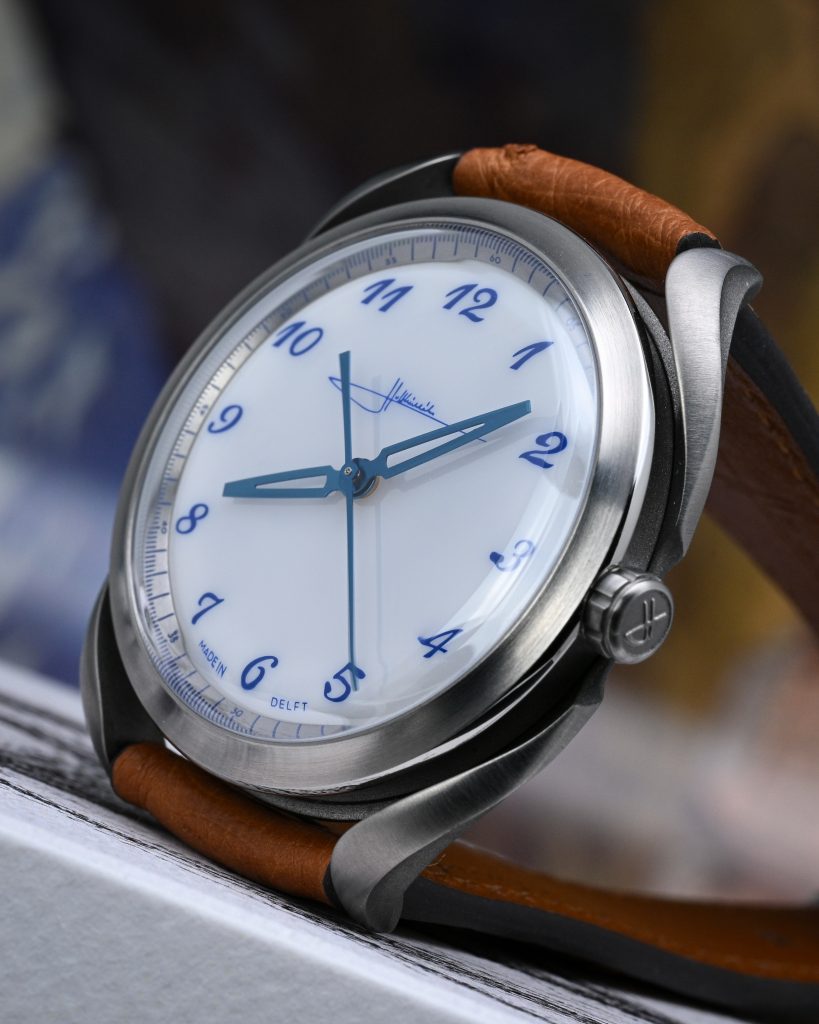
In this review, I’ll be taking a closer look at two variants: the Delft Blue and the 18k Rose Gold dial editions of the Signature Ornament series. Both are available through Collective Horology, one of Holthinrichs’ authorized U.S. retailers, at retail prices of $5,600 USD and $5,300 USD, respectively. I’d like to also thank Damiaen at Holthinrichs and my friend Mike Razak for making this review possible.
Let’s check them out!
Case
The case is nothing short of a sculptural achievement – a design that feels equal parts architecture, art, and engineering. While the brand lists the case at 38.5mm, my own measurements put it closer to 37.75mm in diameter, with a lug-to-lug span of 44.75mm, and about 45mm when measured diagonally across the outermost edges of the lugs. The watch wears with an almost rectangular footprint, giving it a distinct visual identity that feels elegant yet subtly sporty.

At 9.85mm tall, including the vintage-styled boxed sapphire crystal, the watch sits low and securely on the wrist. The signed push-pull crown, measuring 4.75mm, is easy to grip and operate. The 20mm lug width paired with curved spring bars allows the strap to flow naturally into the case, giving the whole composition an integrated, seamless appearance that enhances the sculptural feel of the design.

The case itself is made entirely of Grade 5 Titanium, with the entire mid-case and case-back produced via 3D printing, while the bezel appears to be traditionally machined. This combination of additive and traditional manufacturing allows Holthinrichs to push geometry to its limits while maintaining a high-end tactile quality. The lugs, in particular, are the star of the show, visually disconnected from the central body and curling organically from beneath the case, swooping upward and outward. Their sculptural flow and three-dimensional curvature are mesmerizing from every angle.
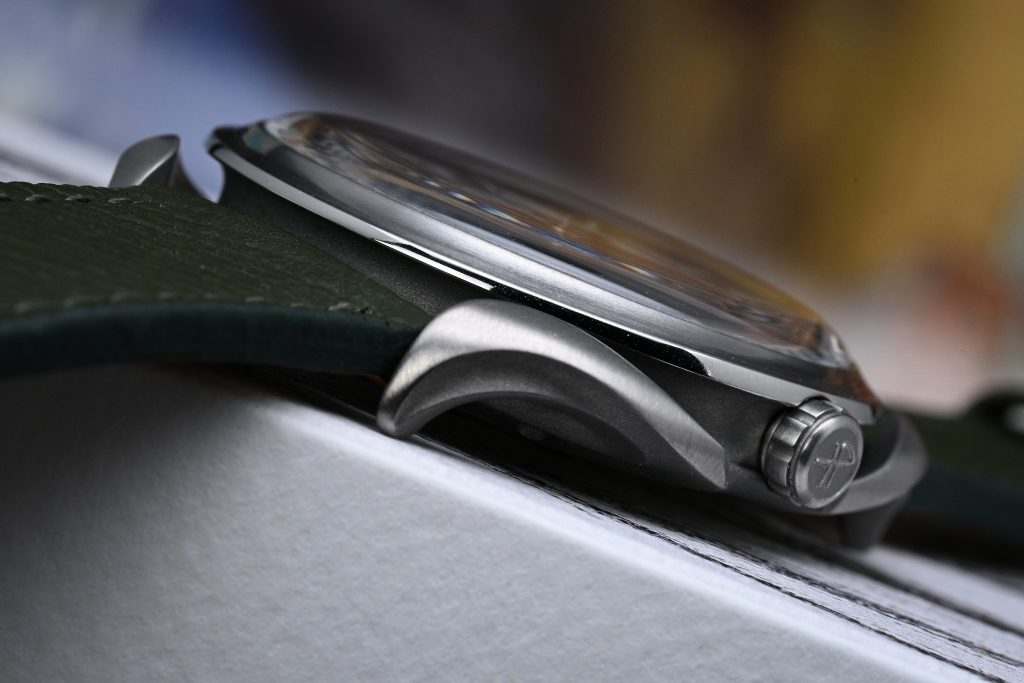
The finishing is where Holthinrichs’ mastery of 3D printing truly shines. Many brands experimenting with printed cases struggle to smooth out the rough, grainy surfaces inherent to the process, often resulting in pieces that feel experimental rather than luxurious. Holthinrichs, by contrast, demonstrates an extraordinary level of refinement. The case features a sophisticated interplay of contrasting textures, and the crisp polished accents along the concave bezel. The result is an organic, flowing case that feels handcrafted, despite its ultra-modern origins.
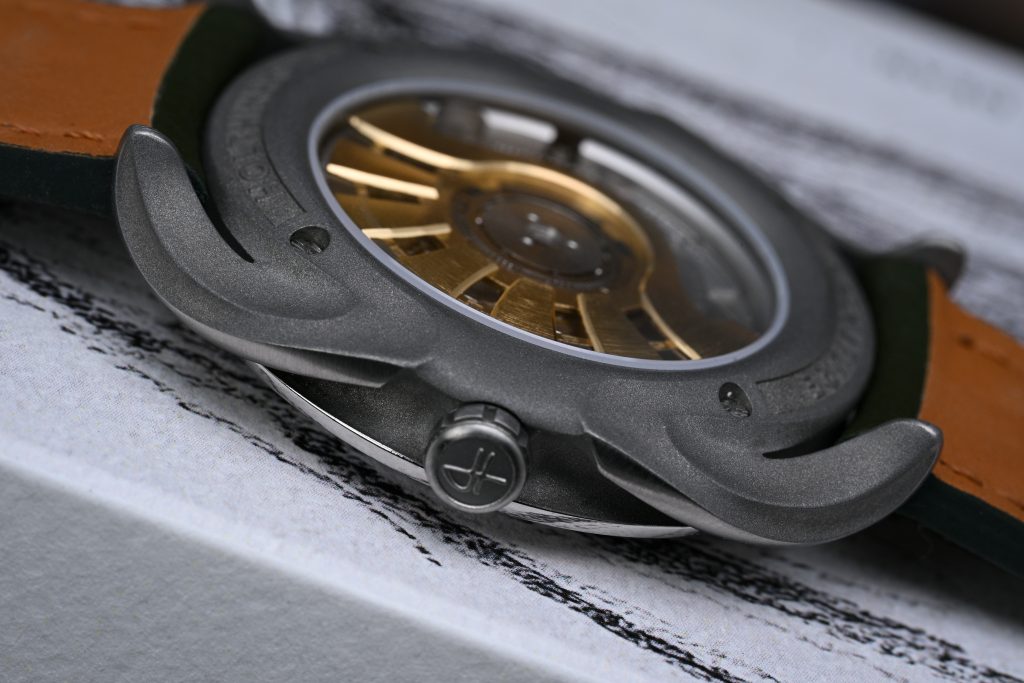
As for practicality, while the official water-resistance rating isn’t explicitly listed on the brand’s website, it’s safe to assume it’s 50 meters, consistent with other similar models. That’s more than enough for daily wear, though this is clearly a watch made to be admired, not abused.
Dial
I’m fortunate to have both styles of the Signature Ornament on hand for this review. Going into this review, I was certain the Delft Blue would be my favorite. Its design, inspired by centuries of Dutch artistry and craftsmanship, felt like the emotional centerpiece of the collection. But after spending meaningful time with both, I found myself increasingly drawn toward the Rose Gold dial, largely because of its architectural construction and incredible sense of depth.
The Delft Blue edition celebrates the brand’s deep connection to the city of Delft – a place rich with artistic and technical heritage. Delft is known for its refined hand-painted pottery. But beyond its cultural and political history, Delft also has a surprising legacy in horology, from the city’s 14th-century clockmakers who built the world’s oldest functioning clock, to Christiaan Huygens’ invention of the pendulum that revolutionized timekeeping.
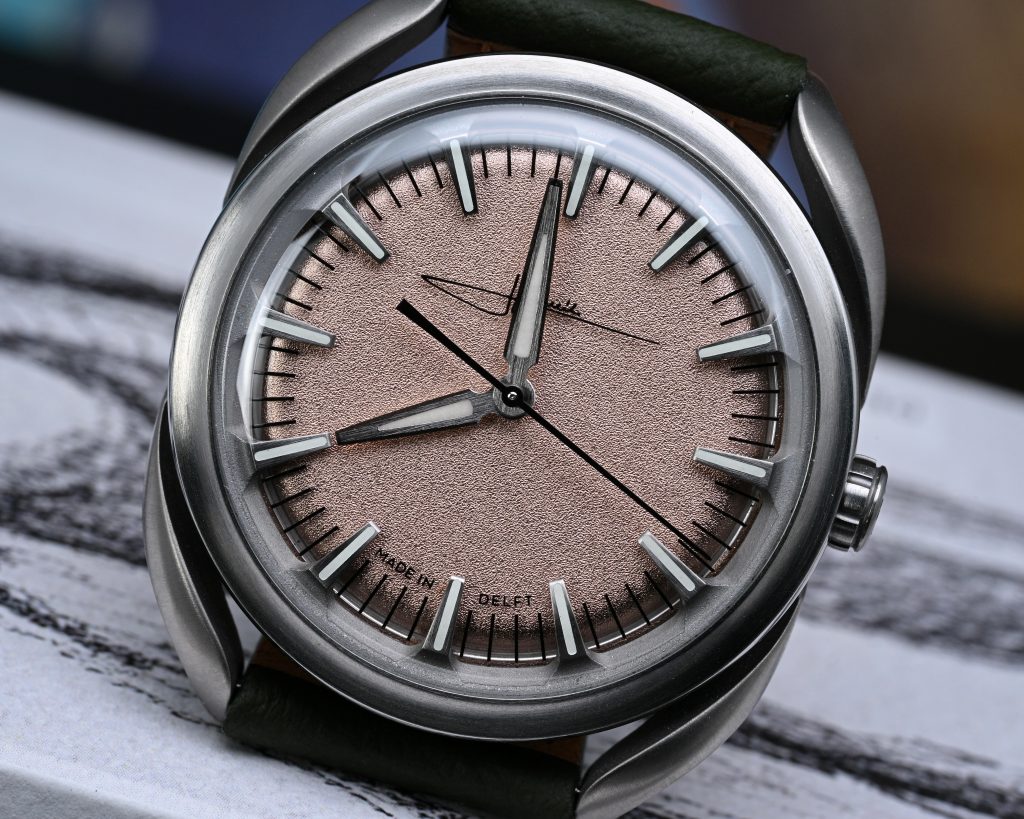

The Delft Blue pays homage to that spirit of design and innovation with a domed white ceramic dial, pad-printed in deep Delft Blue ink. The dial surface is smooth, and almost porcelain-like in its purity. The Breguet-style Arabic numerals, rendered in Holthinrichs’ own interpretation of the classic typeface, complement the case’s flowing lines beautifully.
At the periphery sits an outer silver minute and seconds track, a subtle but clever design touch that balances the otherwise classical look with a hint of utilitarian sportiness. Paired with thermally blued hands, the result is a dial that feels quintessentially Dutch: crisp, graceful, and steeped in history.
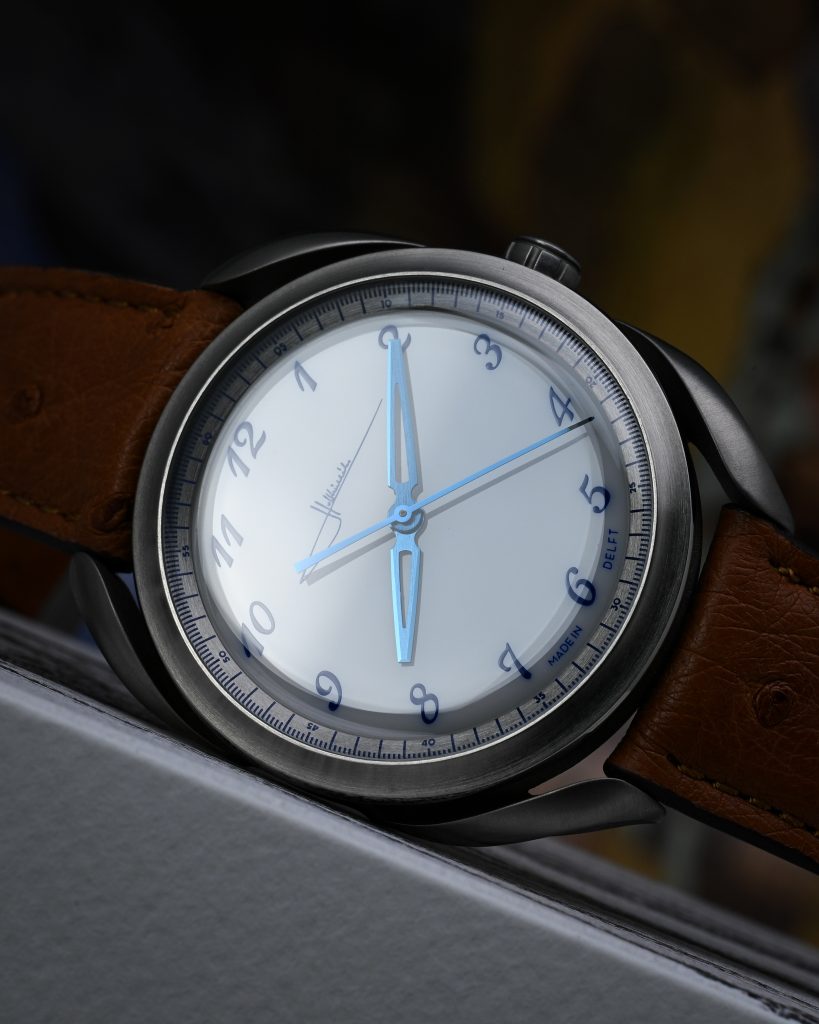
If the Delft Blue is about heritage and restraint, the 18k Rose Gold dial is about spatial artistry. The dial is built in three distinct layers. The base layer is a frosted, grained rose gold metal plate, shimmering subtly under light and lending the dial a luxurious, tactile presence. Above that sits a custom double-domed sapphire layer, which curves gently to create an illusion of depth and curvature that echoes the boxed crystal above it. On this sapphire surface are the pad-printed minute markers and the Holthinrichs logo, both of which appear to float magically in midair.
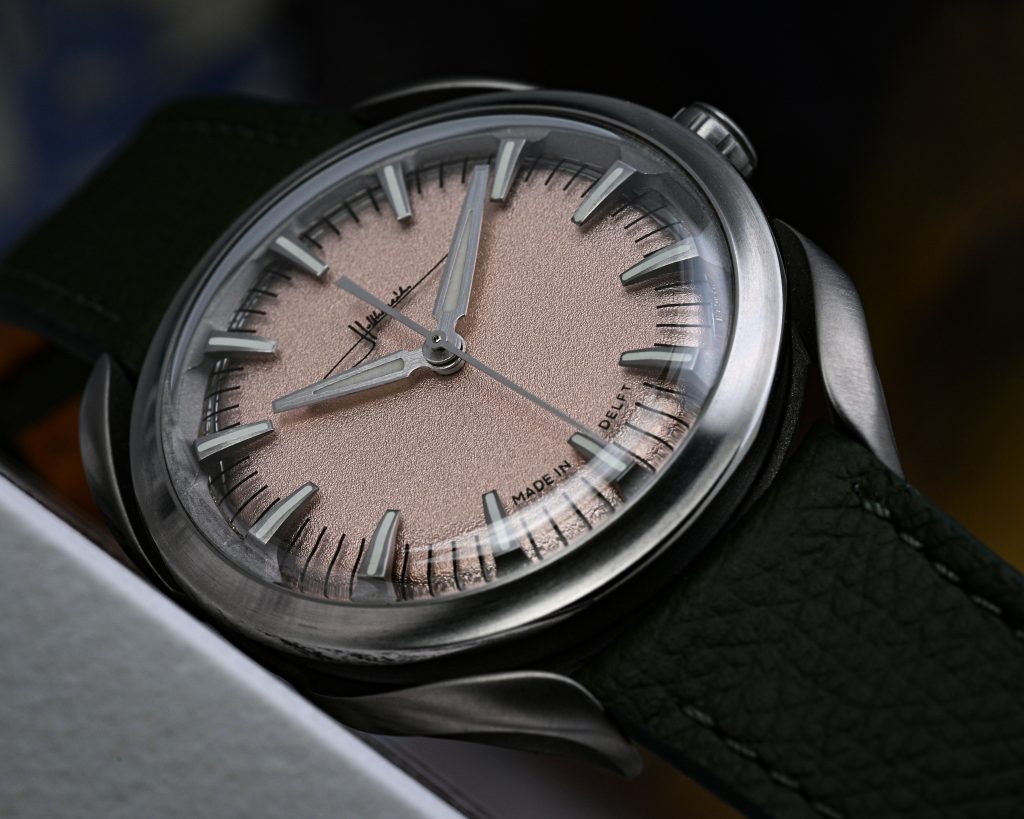
Crowning it all is a milled metal marker ring, its cantilevered hour indices filled generously with Super-LumiNova C3. This suspended construction gives the dial a sense of lightness and precision that feels almost architectural. The layering of metal, sapphire, and light creates a dramatic visual depth that’s far greater than you’d expect from a watch that’s under 10mm thick. It’s an optical and tactile experience that’s distinctly modern, yet it fits seamlessly within the brand’s Art Nouveau-inspired design language.
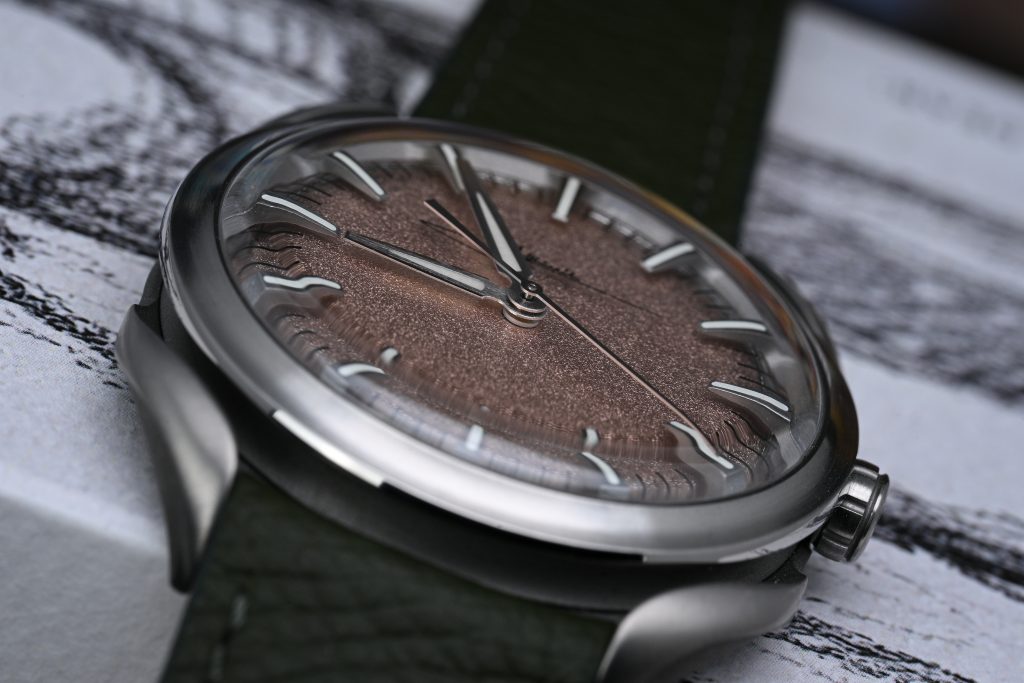
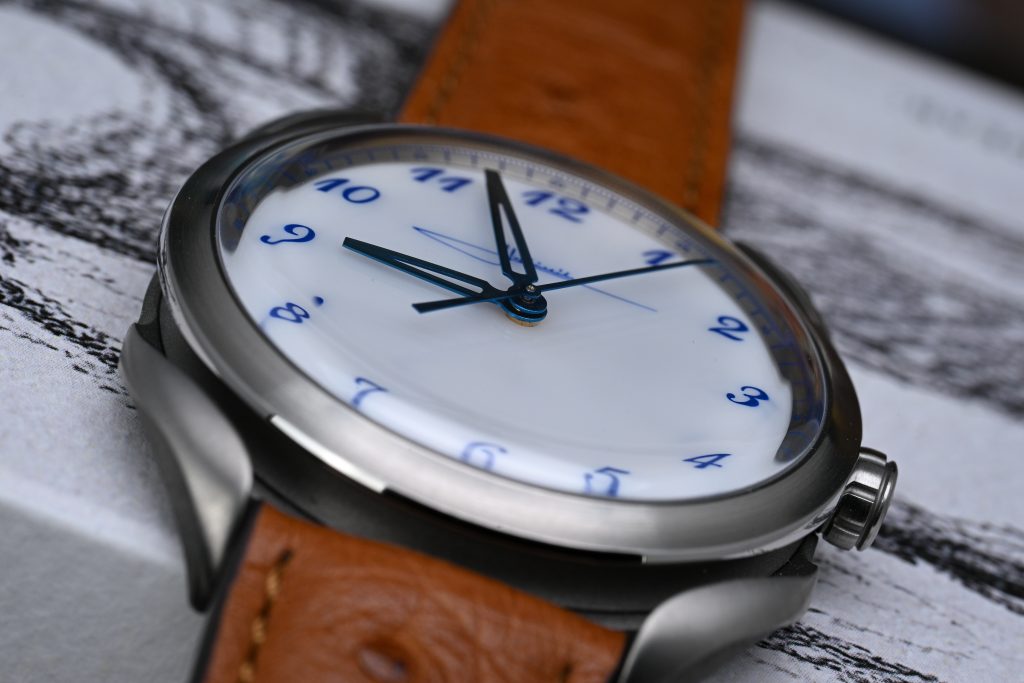
The pad printing on both dials is good, with perfectly crisp minute ticks and cleanly rendered branding. The hands and indices, though finished in a straightforward industrial manner, maintain excellent proportions and superb legibility, balancing the dial’s visual complexity with functional clarity.
Between the two, it’s the Rose Gold dial that ultimately won me over. The depth, the interplay of surfaces, and the floating sapphire layer combine to form one of the most memorable dial architectures I’ve seen in a while. It’s a design that rewards curiosity; the kind that makes you tilt the watch under light just to see how it all interacts.
Lume
While the Delft Blue variant of the Signature Ornament opts for a classical, lume-free presentation, the 18k Rose Gold dial version showcases an entirely different and captivating personality in the dark. Here, the marker ring is milled from a solid piece of metal, with each hour index cantilevered elegantly above the sapphire surface and filled generously with Super-LumiNova C3. This thoughtful construction doesn’t just serve function; it becomes an architectural feature in its own right: an interplay of light, depth, and structure.
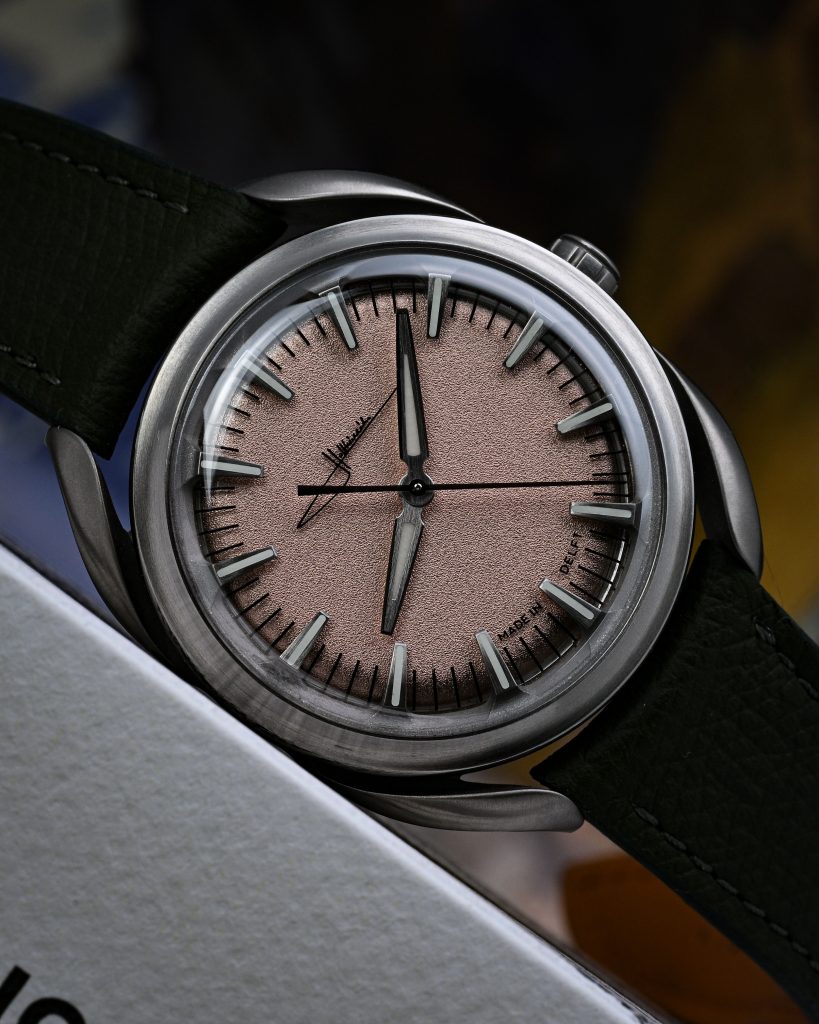
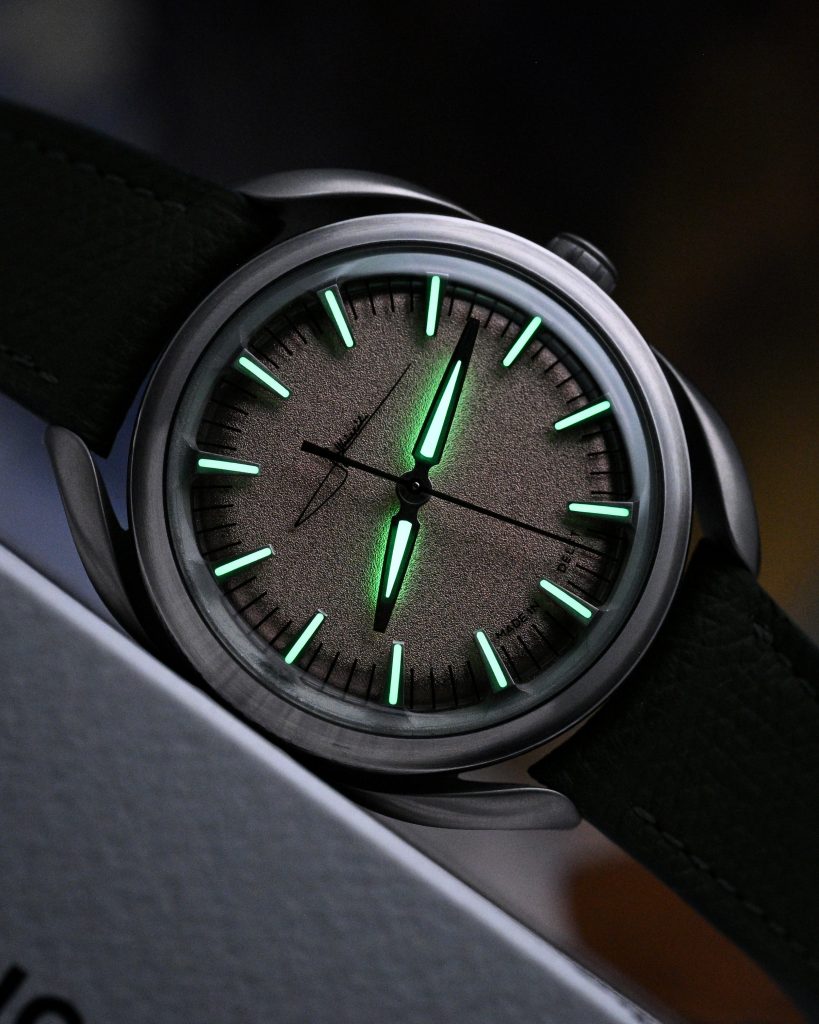
The hour markers are generously filled with lume, and the hands are equally well equipped with matching C3. The entire dial comes alive in a rich, bright green hue that endures impressively through the night. Thanks to the deeply recessed lume cavities, the longevity of the glow exceeds expectations for this type of application. What sets this execution apart for me is the diffused reflection that forms beneath the hands.
As the lume radiates from behind them, it casts a soft, ambient glow onto the rose gold dial surface below, subtly filtered through the sapphire layer that separates them. The result is a multi-layered lume experience, one that feels alive and almost ethereal, reminiscent of what I’ve long admired about MING’s approach to lume.
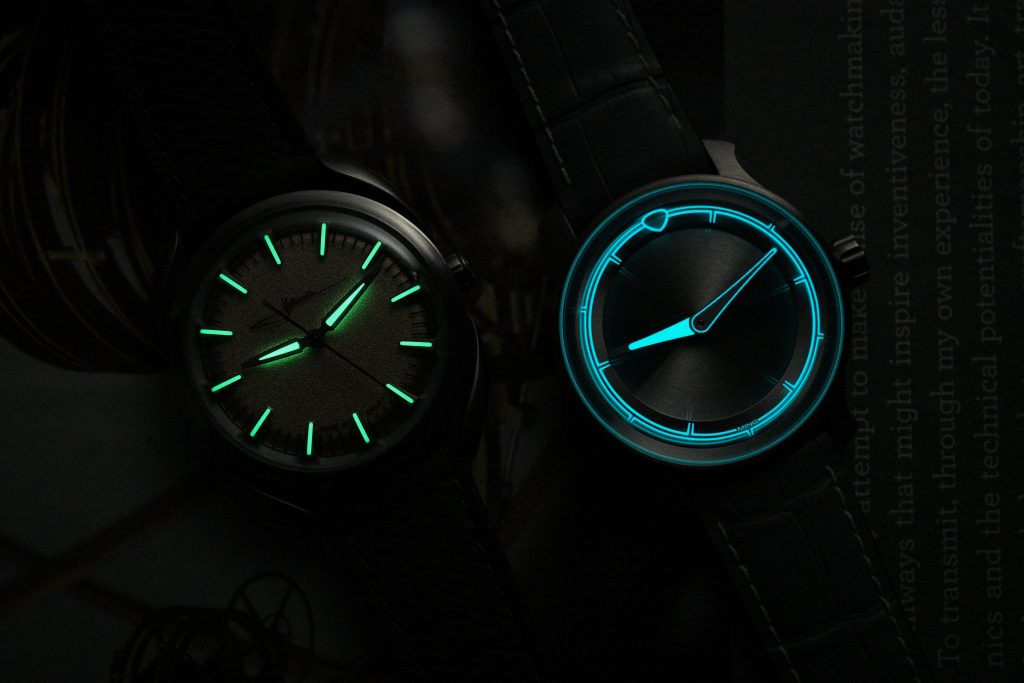
In fact, when I compared it side-by-side with my MING 37.02 Ghost, I found that the Holthinrichs offers superior longevity, maintaining its brightness longer into the night. It’s a remarkable achievement that Holthinrichs were able to also integrate light and lume into their very specific and singular design language that might not typically be associated with it.
Movement
The Ornaments run on a top-grade Sellita SW300-1 movement, which has become one of my favorite off-the-shelf calibers in the sub-$5k range. It’s slim, highly reliable, and offers a satisfying winding experience, unlike its more mediocre sibling, the SW200. However, at nearly $6,000 USD, I do wish they would offer a COSC-certified variant for tighter accuracy. For example, Christopher Ward offers COSC SW300 in their $1850+ range watches.
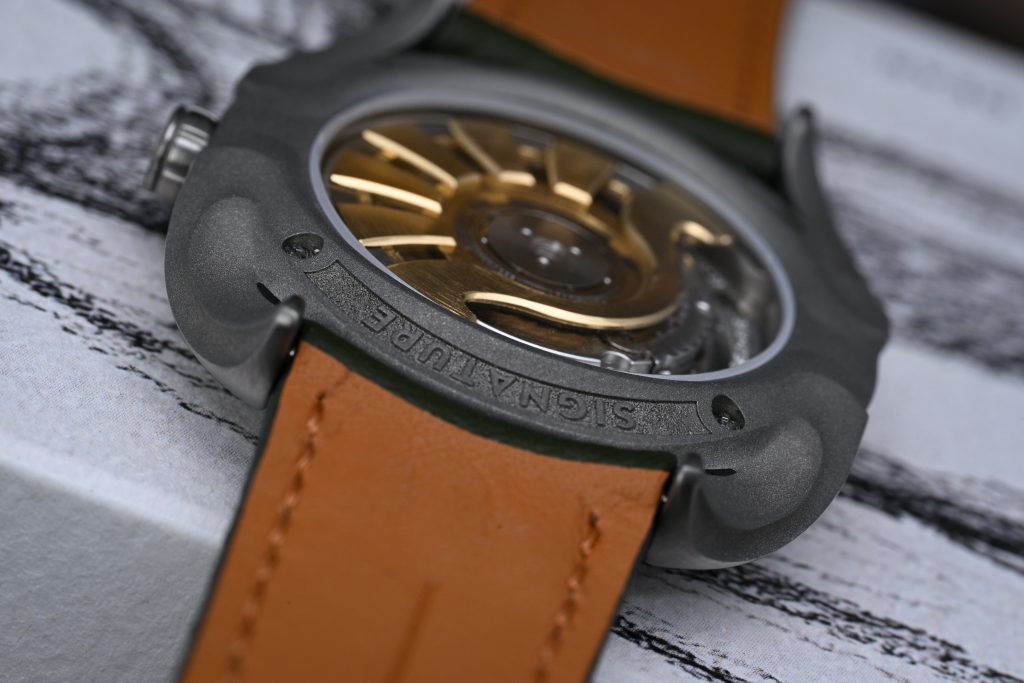
That said, they do seem to regulate these premium-grade movements, with both these prototypes averaging at around +6 seconds per day (spd). To many shopping for a watch in this price bracket, that might not sound particularly impressive given that brands like Tudor achieve tighter tolerances in a similar price bracket – the last 4 Tudor watches I’ve had barely deviated from an insanely accurate +1 spd for 6-8 months. Still, the SW300-1’s quality is undeniable and remains a strong choice for a watch at this level.
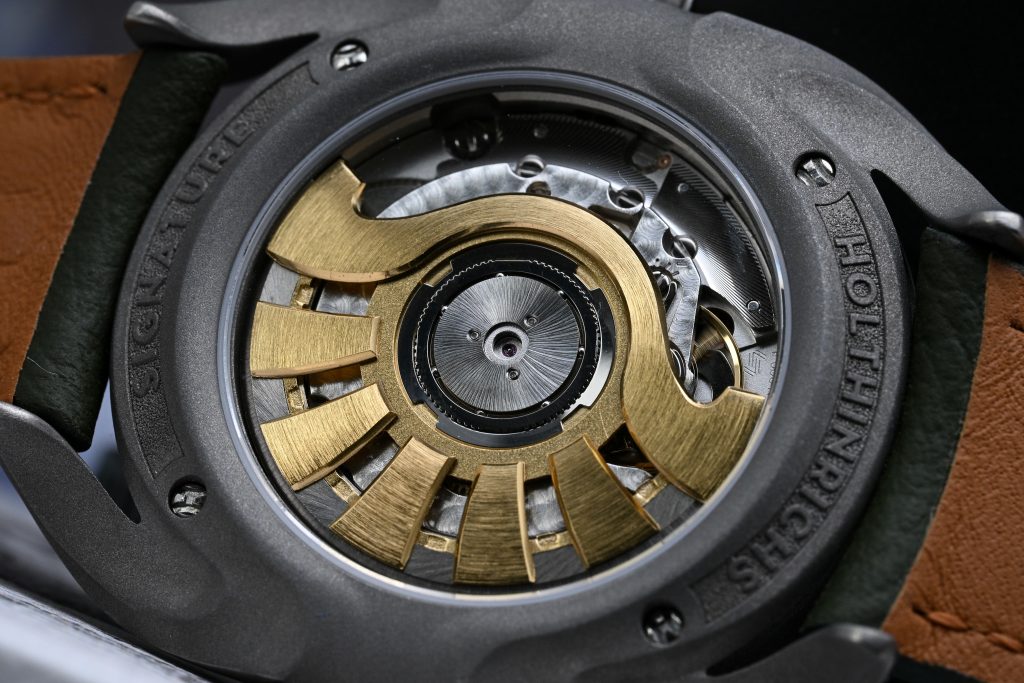
They do elevate the whole experience with a fantastic 18k rose gold plated rotor that shows off a good amount of finishing, from brushing, frosting to visually engaging bevels. It might be one of the most ornate rotor designs I’ve seen on a Sellita SW300 equipped watch to date, which is absolutely fitting.
On The Wrist
On the wrist, both Signature Ornament models deliver a refined yet surprisingly sporty presence. The 37.75mm diameter and 44.75mm lug-to-lug distance sit comfortably on my 6.75″ wrist. If measured diagonally across the sculpted lugs, the case spans about 45mm, giving the watch an almost rectangular wrist presence that subtly enhances its visual width, a quality that lends it a hint of sportiness without losing its architectural grace.
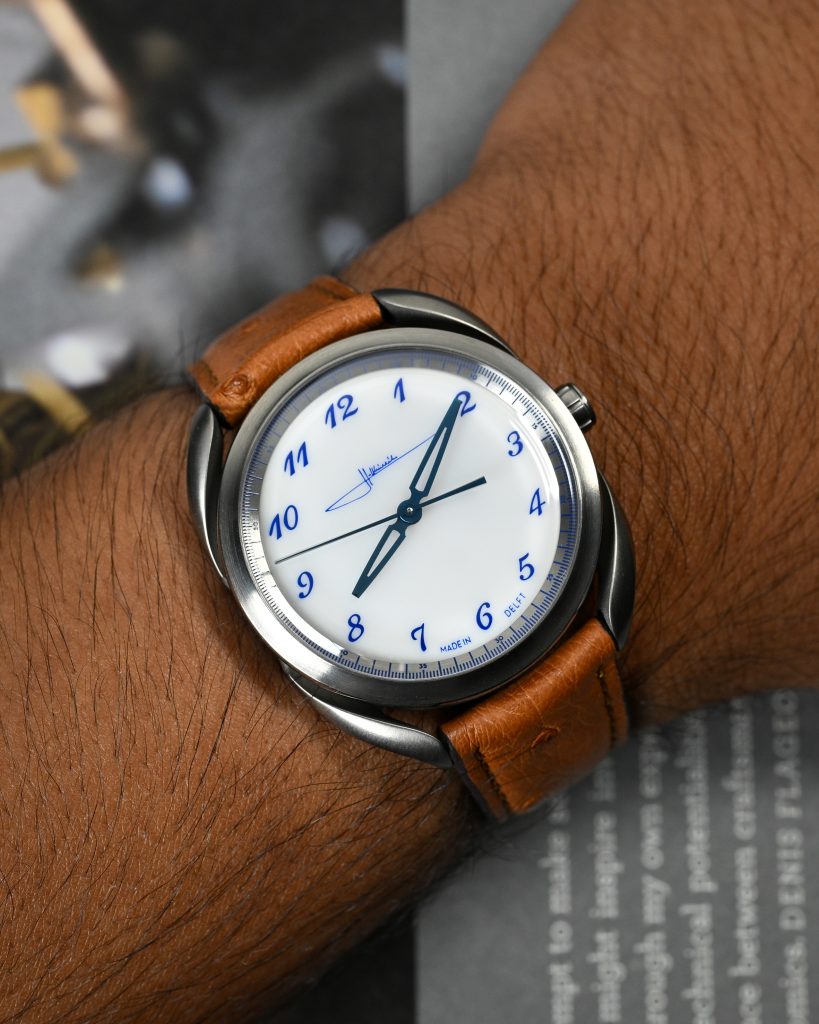
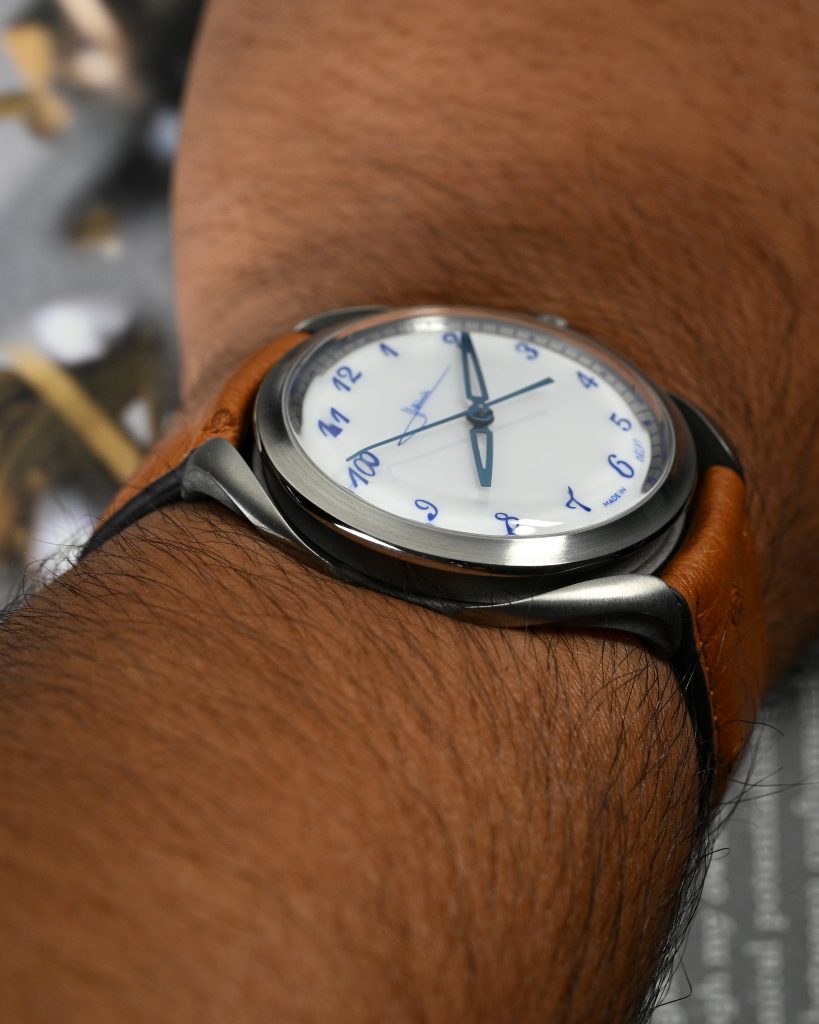
At 9.85mm thick, the case sits low and balanced on the wrist, aided by the lightweight titanium construction. The result is a watch that disappears in daily wear, featherlight yet substantial enough to remind you of its presence in the most satisfying way.
What’s particularly impressive, though, is just how refined the case feels given its 3D-printed origins. Many brands experimenting with additive manufacturing struggle to achieve this level of finesse; too often leaving sharp edges or coarse grain that betray the process. Holthinrichs, by contrast, clearly employs an extensive post-print finishing regimen, transforming raw printed titanium into a case that feels smooth, sculptural, and impeccably finished. Every surface catches light gracefully, every curve feels intentional, and every point of physical contact is smooth to touch; this is the difference between novelty manufacturing and a refined luxury product.
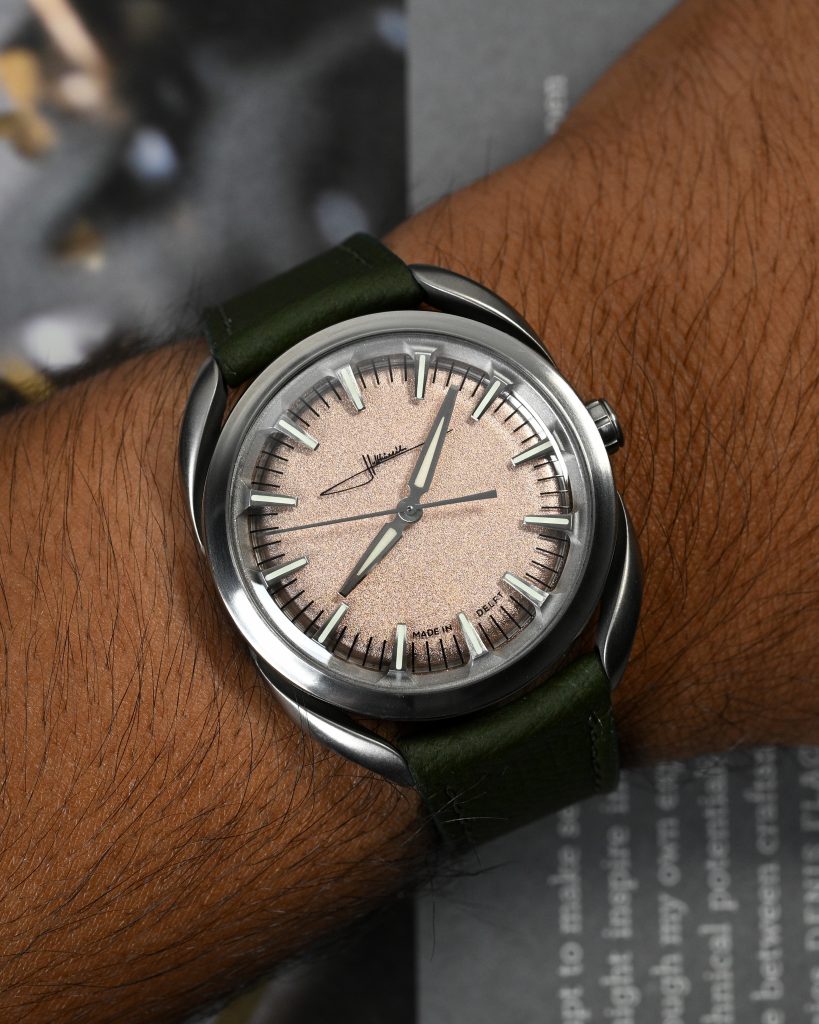

If there’s one area to critique here, it would be directed at the buckle. Of the two examples I handled, one had slightly rough edges that began to damage the strap it came on. I suspect this is an early prototype-related issue, and I’d expect production examples to resolve it.

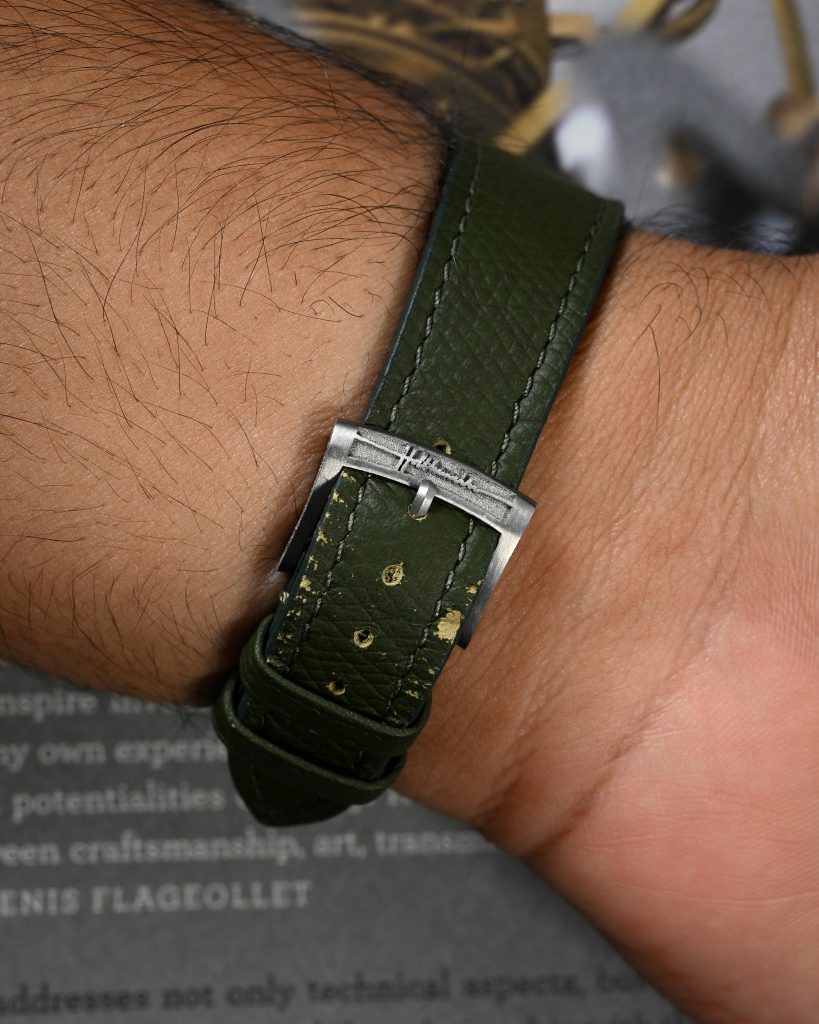
That said, the buckle design itself is excellent, perfectly echoing the watch’s architectural case geometry and maintaining the same level of sculptural intent that defines the rest of the watch. Putting aside this issue, it is a fitting component that completes the holistic design language of the Signature Ornament series.
Wrapping Up
Having finally spent time with these watches, I can confidently say they’ve exceeded the expectations I’ve built up from years of appreciating their work from a distance. These pieces feel like they’re more than just well made watches: they’re wearable works of architecture, born from a singular vision that seamlessly blends art, engineering, and design.
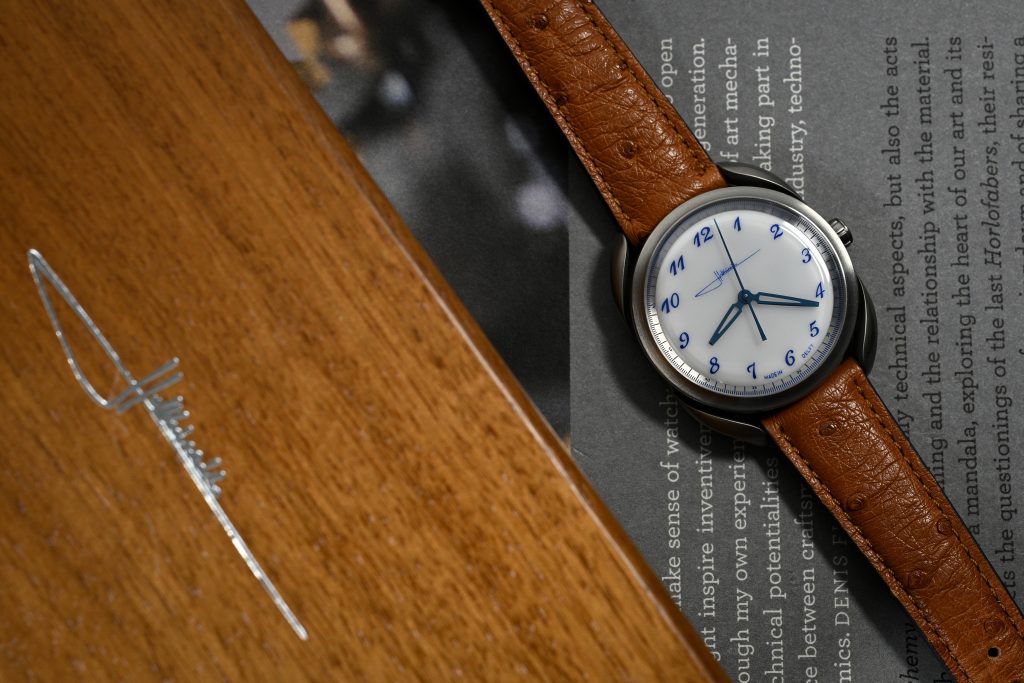
What stands out most to me is how cohesive the entire experience feels: from the 3D-printed titanium case to the way light and shadow play across its curves, from the refined finishing to the thoughtful lume. Every detail feels deliberate and intelligent, the product of someone who understands both form and emotion. They carry a sense of soul and purpose, the kind that can only come from a creator deeply invested in his craft.
If you were to isolate individual components… say, the movement, it’s fair to argue that this watch might seem expensive on paper. But that perspective misses the point entirely, because the true value of this watch lies not in any one part, but in the artistry, design, engineering, and execution that tie everything together.

